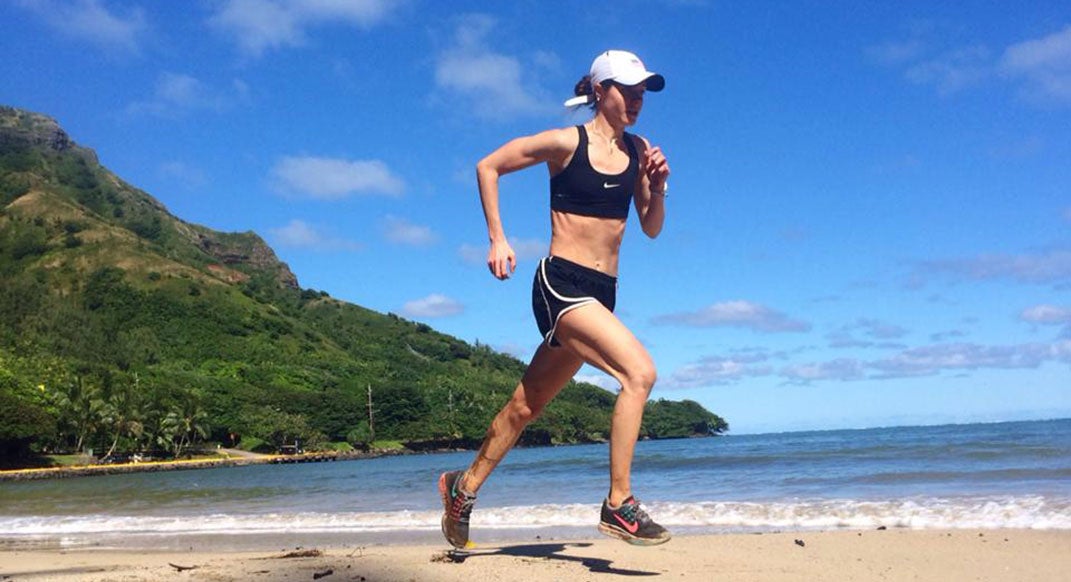Get Faster While Sitting Still

It’s getting hot in here, so take off all your clothes.
But instead of dancing in the club, sit on a bench with a towel around your sensitive parts. And watch your performance improve without moving a muscle.
You may have heard about runners preparing for hot races like Western States or Badwater by sitting in 160-to-200-degree saunas. But the potential benefits are not necessarily limited to hot-weather races.
According to recent studies, there is some evidence that using the sauna consistently could lead to performance benefits in all conditions—both hot and cold. It is even rumored that some elite endurance training programs are piloting “sauna therapy” for some athletes almost year round.
Why might it work, and how can you make it work for you?
RELATED: Saunas: Hot Or Not?
Heat Acclimation
Let’s start with the most obvious reason to use the sauna—it prepares you for race-day heat.
After being in the sauna a few minutes, you’ll notice sweat beads forming, your blood pumping and your heart racing. These physiological responses are your body dealing with the heat stress, and they are very similar to those experienced when getting used to a hot climate. Like running hard in training helps you run hard in a race, sweating hard in the sauna may help you cope with racing in the heat.
A 2001 review of the benefits of the sauna in the American Journal of Medicine found that sauna use lowered heart rate and core temperature during exercise. Smaller studies have found that the sauna improves thermoregulatory function at all temperatures. And countless anecdotal stories talk about sweating it out in the sauna leading to race-day breakthroughs in warm weather.
RELATED: Heat Training for Running High
Performance Improvement in All Temps
This is where things get interesting. There is evidence that using the sauna increases blood-plasma volume and the natural production of erythropoietin (EPO), both of which would improve performance by delivering more red blood cells to working muscles. The sauna could even cause spikes in the natural release of human growth hormone (HGH), which would improve recovery and subsequent performance.
One small study in the Journal of Science and Medicine in Sport had six male runners use the sauna for 30 minutes every day for three weeks. Compared to the control period, the runners had a 30-percent improvement in time to exhaustion during subsequent time trials.
While such studies show promise, the science is not yet conclusive on sauna use for performance. Right now, the consensus seems to be that it does help performance in hot-weather races for those living in a cold climate and it might improve performance in other conditions.
RELATED: The Basics of Heat Training for Running
How to Sauna
First, talk to a doctor before using the sauna. Just like hot tubs, with their warnings about the duration of immersion and heart conditions, sauna use may carry risks for some individuals.
Unfortunately, there is no widely accepted protocol for sauna use for athletes. So far, any elite training programs that are using the sauna have kept their methods close to the vest. The Journal of Science and Medicine in Sport study mentioned above had the runners use a 190-degree sauna for 30 minutes immediately post-run, 12 times in three weeks. Another study had subjects use the sauna for one hour twice a week. The most extreme had mice use the sauna for one hour, three times a day. But unless you have the leisure time and anatomy of a lab mouse, I wouldn’t try that last one.
I recommend erring on the side of caution and starting with 15 to 20 minutes of sauna use after runs, a few times per week. If you feel good after a week or two, you can increase duration and frequency, though I wouldn’t go more than 30 minutes per day unless you have a doctor (or a coach) you trust giving you directions. Finally, avoid the sauna directly before runs; it is tiring and would likely detract from your workout.
Ready, set, sweat!
David Roche is a two-time USATF trail national champion, the 2014 U.S. Sub-Ultra Trail Runner of the Year and a member of Nike Trail Elite and Team Clif Bar. He works with runners of all abilities through his coaching service, Some Work, All Play. Follow David’s daily training on Strava here, and follow him on Twitter here.